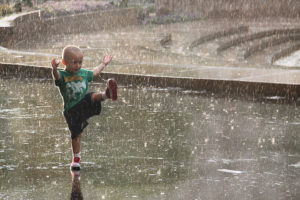Yeah, the title is a little “Click-baity,” but, dammit, I learned 7 things, and I want to share them. More importantly, I feel like I should be able to tell my readers that there are 7 things they are about to read.
So, yeah, here I am at the end of one heck-of-a year with lots of travelling, a HUGE number of new engagements with teams and individuals, and lots of personal growth. In retrospective fashion, I looked back and distilled the whole mess into a conglomeration. Here you go.
#1 People will use you up.
 It’s not that people actually set out to drain someone’s time, energy, and “joie.” No one wakes up and says “Hmm, let me look at my calendarrrrrr. Oooo, Looky here. Just one more hallway conversation and I’ll have Arjay looking like a cicada shell by Thursday.” What I mean is this: while people can use you up, it is up to you to keep yourself from being used up. I’m not saying this out of bitterness or regret either. Saying “No” added positivity to many of my working relationships. Better yet, suggesting an alternative date added structure. Being open and honest about whether you have time is a key element to a healthy engagement for everyone involved.
It’s not that people actually set out to drain someone’s time, energy, and “joie.” No one wakes up and says “Hmm, let me look at my calendarrrrrr. Oooo, Looky here. Just one more hallway conversation and I’ll have Arjay looking like a cicada shell by Thursday.” What I mean is this: while people can use you up, it is up to you to keep yourself from being used up. I’m not saying this out of bitterness or regret either. Saying “No” added positivity to many of my working relationships. Better yet, suggesting an alternative date added structure. Being open and honest about whether you have time is a key element to a healthy engagement for everyone involved.
#2 It really helps to have fellow coaches or like-minded individuals around
 You gotta have someone to bounce ideas or frustrations off of. This one came as a group realization working with Richard Korr and Charles Rodriguez on the Agile vlog, “Rice and Beans.” We were all bemoaning all of our travelling and being spread a little thin. Our recording sessions were something we REALLY missed. Then it hit us; our vlog was as much for us as it was for our subscribers. Talking to one another about our successes and failures and thoughts and realizations was cathartic. I recommend that everyone seek out a sounding board. Build a small group of people (I’m talking no more than 3 or 4) with the same goals and same problems you face. Have no other agenda other than to bounce ideas off of one another.
You gotta have someone to bounce ideas or frustrations off of. This one came as a group realization working with Richard Korr and Charles Rodriguez on the Agile vlog, “Rice and Beans.” We were all bemoaning all of our travelling and being spread a little thin. Our recording sessions were something we REALLY missed. Then it hit us; our vlog was as much for us as it was for our subscribers. Talking to one another about our successes and failures and thoughts and realizations was cathartic. I recommend that everyone seek out a sounding board. Build a small group of people (I’m talking no more than 3 or 4) with the same goals and same problems you face. Have no other agenda other than to bounce ideas off of one another.
#3 You’re gonna’ get soaked. Wade in.
 “There is something to be learned from a rainstorm. When meeting with a sudden shower, you try not to get wet and run quickly along the road. But doing such things as passing under the eaves of houses, you still get wet. When you are resolved from the beginning, you will not be perplexed, though you still get the same soaking. This understanding extends to everything.” No. That’s not something I wrote, or even something I learned this year. It’s a code I lived by though, and it served me well. That’s from the Hagakure by Yamamoto Tsunetomo, and I think it belongs on every list that hints about wisdom or learning. You’re welcome.
“There is something to be learned from a rainstorm. When meeting with a sudden shower, you try not to get wet and run quickly along the road. But doing such things as passing under the eaves of houses, you still get wet. When you are resolved from the beginning, you will not be perplexed, though you still get the same soaking. This understanding extends to everything.” No. That’s not something I wrote, or even something I learned this year. It’s a code I lived by though, and it served me well. That’s from the Hagakure by Yamamoto Tsunetomo, and I think it belongs on every list that hints about wisdom or learning. You’re welcome.
#4 Agile requires discipline. . .
 and having accountability to a team really helps with that. Standups in particular look incredibly easy to do–set a time, set a cadence, and execute–get in a good habit. If any of you have tried to start a good habit. . . well that’s the rub, isn’t it? If something is “easy” to start as a habit, it is just as “easy” to blow off. At the heart of this is the fact that having teammates to hold you accountable is REALLY important in an agile team. Heck, it’s important in everything. My experiment earlier this year put that all out on display.
and having accountability to a team really helps with that. Standups in particular look incredibly easy to do–set a time, set a cadence, and execute–get in a good habit. If any of you have tried to start a good habit. . . well that’s the rub, isn’t it? If something is “easy” to start as a habit, it is just as “easy” to blow off. At the heart of this is the fact that having teammates to hold you accountable is REALLY important in an agile team. Heck, it’s important in everything. My experiment earlier this year put that all out on display.
#5 Beware of oversimplification
 Don’t trust anyone who claims he’s a coach but starts a sentence with “You need to just. . . “ or “Oh, that’s simple. We. . .” That person is not coaching you. That person is being a bossy pants or selling snake oil. A coach will keep asking you questions–possibly uncomfortable ones–until you and your team understand what you and your team need to do. Sure, there are times when you all might need a baseline explanation, but the words “just” or “simply” should be big ol’ warning flags. Team problems are never “just” or “simply” a matter of anything. Teams are complex, and solutions require work. You might be thinking, “Wait. Arjay. You’re a coach. How did this manifest itself for YOU this year?” A good number of teams I worked with started off by telling me this: “The coach we called in before said all we needed to do was just . . .”
Don’t trust anyone who claims he’s a coach but starts a sentence with “You need to just. . . “ or “Oh, that’s simple. We. . .” That person is not coaching you. That person is being a bossy pants or selling snake oil. A coach will keep asking you questions–possibly uncomfortable ones–until you and your team understand what you and your team need to do. Sure, there are times when you all might need a baseline explanation, but the words “just” or “simply” should be big ol’ warning flags. Team problems are never “just” or “simply” a matter of anything. Teams are complex, and solutions require work. You might be thinking, “Wait. Arjay. You’re a coach. How did this manifest itself for YOU this year?” A good number of teams I worked with started off by telling me this: “The coach we called in before said all we needed to do was just . . .”
#6 Seeing a problem and admitting that it’s your problem are not the same thing
 This one is about the subtleties of language. Teams may know they have a problem, but not everyone on the team may be ready to admit that it’s a problem. We’ve all heard the overused expression “Admitting you have a problem is the first step on the road to recovery.” The word “Admitting” is a wheelbarrow of wet sand. Awkward and heavy, it indicates that it was something you were denying. That’s what makes this one so subtle. You can get team members to say “Yep. That’s a problem.” That part of the conversations is actually kind of easy. On the other hand, getting them to say “Yes, that’s a problem that we have been ignoring and that we need to fix” is where a coach earns his or her keep. Getting the conversation to that point is a lot harder to do than it sounds. It’s worth it though because when you get a team to that point, it is a pretty great feeling.
This one is about the subtleties of language. Teams may know they have a problem, but not everyone on the team may be ready to admit that it’s a problem. We’ve all heard the overused expression “Admitting you have a problem is the first step on the road to recovery.” The word “Admitting” is a wheelbarrow of wet sand. Awkward and heavy, it indicates that it was something you were denying. That’s what makes this one so subtle. You can get team members to say “Yep. That’s a problem.” That part of the conversations is actually kind of easy. On the other hand, getting them to say “Yes, that’s a problem that we have been ignoring and that we need to fix” is where a coach earns his or her keep. Getting the conversation to that point is a lot harder to do than it sounds. It’s worth it though because when you get a team to that point, it is a pretty great feeling.
#7 Too much work in progress means nothing gets done.
 Having 15 things in progress just means that you are able to tick 15 “in progress” boxes. That’s what get’s completed, tick marks. The sad part about this one is that, for the teams and leaders with whom I work, exceeding WIP (work in progress) limits is one of the most common bad habits identified. This year, boy howdy did I let it get away from me on a personal level. There are stacks of applications
Having 15 things in progress just means that you are able to tick 15 “in progress” boxes. That’s what get’s completed, tick marks. The sad part about this one is that, for the teams and leaders with whom I work, exceeding WIP (work in progress) limits is one of the most common bad habits identified. This year, boy howdy did I let it get away from me on a personal level. There are stacks of applications  and articles just sitting in a pile (virtual pile within a virtual folder in Google Drive). I’ve missed deadlines. Certifications are in jeopardy. Projects are stacking up. Why? Because I wanted to do it ALL. Don’t even ask about how I’m doing practicing my banjo. The list of unfinished work hurts to look at, but letting some things go lifts a huge burden. Want more energy? Swarm on and finish top priority items one-at-a-time. Accomplishment feels good. Who knew?
and articles just sitting in a pile (virtual pile within a virtual folder in Google Drive). I’ve missed deadlines. Certifications are in jeopardy. Projects are stacking up. Why? Because I wanted to do it ALL. Don’t even ask about how I’m doing practicing my banjo. The list of unfinished work hurts to look at, but letting some things go lifts a huge burden. Want more energy? Swarm on and finish top priority items one-at-a-time. Accomplishment feels good. Who knew?
To the Year ahead
So that’s it. Looking back, it was a pretty great year. I traveled all over the world working with teams in various stages of maturity. I had some “Ah Ha” moments, and just as importantly, I helped quite a few other people have their own “Ah Ha” moments. In the end, I would consider that a pretty good year. I am really looking forward to applying what I’ve learned to what the hew year throws at me, and I’m really looking forward to what I’m going to learn in 2019.





